Traveling Solo
Solo Travel: Mastering the Art of Getting Around


As a seasoned solo traveler, I’ve learned that mastering the art of getting around is essential. It’s like navigating through a bustling maze, where every turn presents new opportunities and challenges.
In this informative blog post, I’ll share the best transport options for solo travel, offer tips on how to confidently get around alone in foreign countries, discuss renting vehicles for solo trips, delve into using public transport effectively, and provide valuable advice for those who prefer the solitude of solo walking and hiking adventures.
Let’s embark on this journey together!
Key Takeaways
- Renting a car offers convenience and flexibility for solo travel.
- Research and understand the local public transport system before arriving in a foreign country.
- Choose the right vehicle based on terrain, weather conditions, and comfort level when renting for solo trips.
- Public transport is a convenient and cost-effective option for solo travel, allowing you to easily navigate unfamiliar places and save money.
Best Transport Options for Solo Travel
When it comes to solo travel, the best transport options for you are going to depend on your destination and personal preferences.
As someone who loves exploring new places alone, I have found that there are a few options that work well in most situations.
If you’re looking for convenience and flexibility, renting a car can be a great choice. It allows you to go wherever you want, whenever you want.
However, if you prefer to immerse yourself in the local culture and avoid the hassle of driving, public transport is a fantastic option. Trains and buses can take you to popular tourist spots as well as off-the-beaten-path destinations.
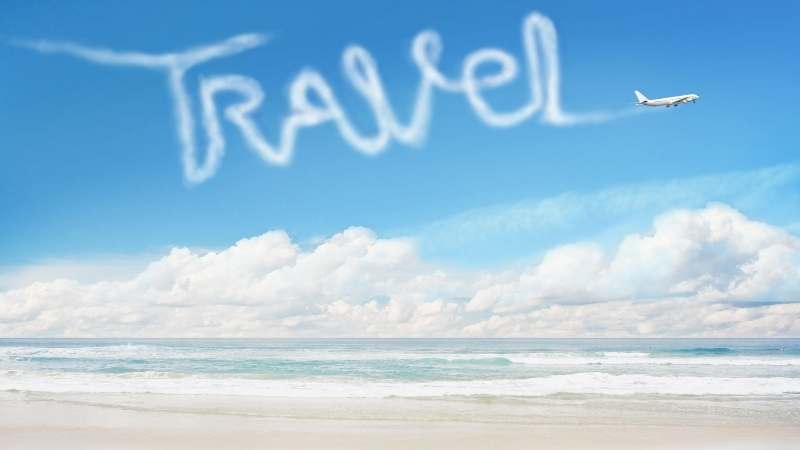

Another option that I personally enjoy is walking or hiking. It not only keeps me active but also allows me to discover hidden gems that I might have missed otherwise.
Ultimately, the best transport option for solo travel is the one that aligns with your preferences and helps you make unforgettable memories on your journey.
Tips on Getting Around Alone in Foreign Countries
Navigating unfamiliar territories by yourself can be made easier by familiarizing yourself with local transportation options and seeking advice from locals.
When traveling alone in foreign countries, it’s important to stay safe and make smart choices when getting around. One of the best tips I’ve learned is to research and understand the local public transport system before arriving. This will help you navigate the city efficiently and save money on expensive taxis.
Additionally, consider renting a bicycle or scooter for shorter distances, as this gives you more flexibility and allows you to explore at your own pace.
Finally, don’t underestimate the power of walking! Solo walking tours can be a great way to immerse yourself in the local culture and discover hidden gems along the way.
Remember, always prioritize your safety and ask for recommendations from locals who know the area best.
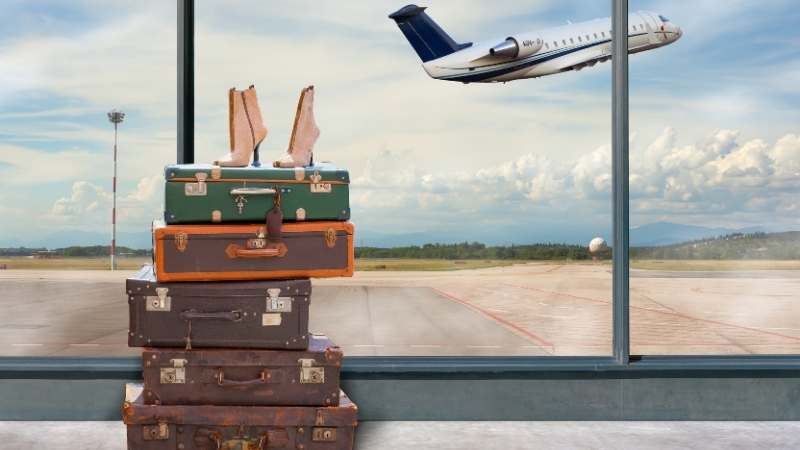

Happy travels!
Renting Vehicles for Solo Trips
Renting vehicles for solo trips can provide you with the freedom and flexibility to explore at your own pace. It’s a fantastic way to truly immerse yourself in a foreign country and discover hidden gems off the beaten path.
Here are some tips to help you make the most of renting a vehicle for your solo adventure:
-
Choose the right vehicle: Consider the terrain, weather conditions, and your comfort level when selecting a rental car or motorbike.
-
Plan ahead: Research local driving rules and regulations, as well as any permits or licenses you may need.
-
Stay safe: Familiarize yourself with local road signs and be cautious of unfamiliar traffic patterns.
Using Public Transport for Solo Travel
Public transport is a convenient and cost-effective way to explore new cities on your own. As a solo traveler, I have found that using public transport allows me to easily navigate unfamiliar places and save money at the same time. Whether it’s hopping on a bus, taking the subway, or riding a tram, public transportation systems are often well-connected and efficient in many foreign countries.
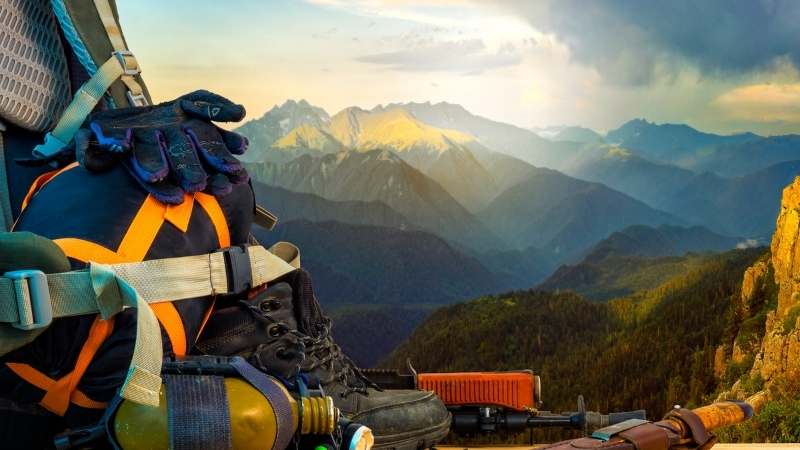

One of the biggest advantages of using public transport is the ability to immerse yourself in the local culture. You get to see how locals go about their daily lives, interact with them, and truly experience the city like a resident. It also gives you the freedom to explore off-the-beaten-path neighborhoods that might be harder to reach by other means.
Another benefit is that public transport can be more environmentally friendly compared to other modes of transportation. Instead of relying on taxis or rental cars which contribute to pollution and congestion, using buses or trains reduces your carbon footprint while still allowing you to get around efficiently.
When using public transport for solo travel, it’s important to plan ahead by researching routes and schedules beforehand. Many cities have user-friendly apps or websites that provide real-time information on bus/train timings and routes. This ensures you don’t waste time waiting for transportation or end up getting lost in an unfamiliar place.
Furthermore, it’s advisable to familiarize yourself with ticketing systems before boarding any form of public transport. Some cities use smart cards or passes that need to be topped up, while others require exact change for tickets purchased onboard. Having knowledge about these systems will save you from any confusion or delays during your journey.
Overall, using public transport as a solo traveler offers numerous benefits such as affordability, convenience, sustainability, and cultural immersion. So next time you find yourself exploring a new city alone, consider utilizing its local transportation system – not only will it help you get around easily but also enhance your travel experience by connecting you with the heart of the city and its people.
Solo Walking and Hiking Tips
While exploring new destinations on foot, it’s essential to stay hydrated and wear comfortable shoes to ensure an enjoyable solo walking or hiking experience. Here are some tips to help you make the most out of your adventure:
-
Plan your route: Research the area beforehand and map out a trail or path that suits your fitness level and interests.

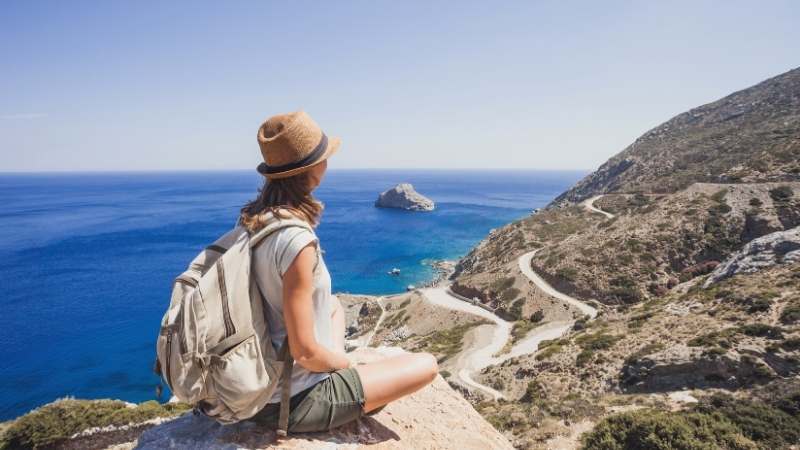
-
Pack smart: Bring a backpack with essentials such as water, snacks, sunscreen, and a first aid kit.
-
Safety first: Let someone know about your plans and estimated return time. It’s also wise to carry a whistle or pepper spray for added security.
By following these tips, you can fully immerse yourself in nature while staying safe during your solo walking or hiking expedition.
Remember to take breaks, breathe in the fresh air, and cherish every step of the journey. Happy trails!
Frequently Asked Questions
Is It Safe to Walk Alone in Foreign Countries?
Yes, it’s generally safe to walk alone in foreign countries if you take some precautions. Research the area beforehand, stay in well-lit and populated areas, and be aware of your surroundings. Trust your instincts and always prioritize your safety.
How Do I Navigate Public Transportation Systems in Unfamiliar Cities?
Navigating public transportation in unfamiliar cities can be daunting, but with a few tips and tricks, it becomes a breeze. Research routes beforehand, use mobile apps for live updates, and don’t hesitate to ask locals for help.
What Are the Advantages of Renting a Vehicle for Solo Travel?
Renting a vehicle for solo travel has many advantages. It offers flexibility, convenience, and the ability to explore off-the-beaten-path destinations. Plus, you can set your own schedule and have complete control over your journey.
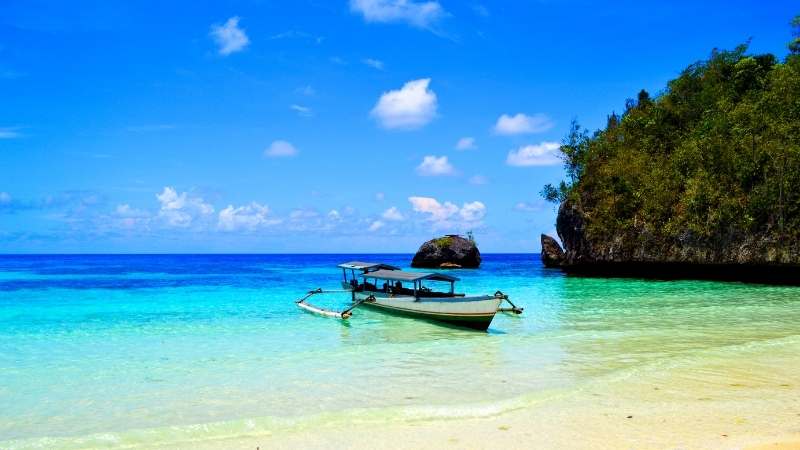

Are There Any Specific Precautions I Should Take When Traveling Alone?
When traveling alone, it’s important to take specific precautions. Always research the destination beforehand, stay aware of your surroundings, and let someone know your plans. Safety should be a top priority.
What Are Some Recommended Apps or Resources for Solo Travelers to Use When Getting Around?
When traveling alone, I recommend using apps like Google Maps and Uber to navigate unfamiliar places. Additionally, websites like Rome2rio and TripAdvisor can provide valuable information on public transport options and popular walking/hiking routes.



Hello there! I’m Gabriel Holmes, a 41-year-old travel enthusiast with a degree in Marketing from the Indiana University Northwest. I’m the voice behind TopWorldTravels.com, where I channel my passion for exploration into engaging travel narratives and invaluable tips.
My journey into the world of travel is a personal odyssey, fueled by a desire to uncover the beauty and diversity our planet has to offer. Over the years, I’ve wandered through countless destinations, immersing myself in various cultures and capturing the essence of each experience through my writing. From the bustling streets of metropolitan cities to the serene landscapes off the beaten path, I’ve made it my mission to share the gems I discover along the way.
Armed with my marketing background from IUN, I approach travel with a strategic and analytical mindset. This expertise allows me to curate content on TopWorldTravels.com that resonates with a diverse audience. Whether you’re a budget backpacker or a luxury traveler, my goal is to provide insights that cater to all tastes and preferences.
Beyond the typical tourist spots, I’m committed to uncovering the authentic heart of each destination. My writings not only offer practical advice on packing and navigating unfamiliar terrains but also emphasize the importance of responsible tourism. I believe in leaving a positive impact on the places I visit, promoting sustainable practices that preserve the environment and support local communities.
Join me on my virtual expeditions at TopWorldTravels.com, where my words weave a tapestry of discovery, wanderlust, and cultural appreciation. Travel, for me, is more than a leisure activity; it’s a transformative journey that enriches the soul and broadens horizons. Let TopWorldTravels.com be your compass to a world of unforgettable experiences, as we embark on this vicarious adventure together.
Traveling Solo
What are the best travel destinations to experience local street food?


Introduction to Global Culinary Adventures
Embarking on a journey around the world to discover the most tantalizing street food is not just about satisfying your taste buds. It’s an immersive experience that offers a window into the soul of a culture. Through gastronomy tours and visits to culinary hotspots, travelers can enjoy street cuisine that ranges from the exotic to the familiar, all while exploring vibrant food markets and authentic eateries. This guide aims to unveil the top destinations where the streets are not just pathways but a bustling gallery of local delicacies waiting to be explored.
Asia: A Continent of Flavorful Mysteries
Asia stands out as a continent where street food is not just food; it’s a way of life. From the bustling markets of Bangkok to the quiet alleys of Kyoto, every corner offers something unique.
Bangkok, Thailand, is often considered the street food capital of the world. Here, visitors can indulge in everything from spicy pad Thai to sweet mango sticky rice, all served with the warmth and hospitality that Thais are known for.
Moving eastward, Tokyo, Japan, offers a different kind of street food experience. While it’s famous for its Michelin-starred restaurants, the street food, like takoyaki (octopus balls) and yakitori (grilled chicken skewers), provides a delicious and quick alternative that reflects the meticulous nature of Japanese cuisine.
Latin America: A Symphony of Flavors
In Latin America, street food is a colorful and vibrant part of daily life. Mexico City, Mexico, is a treasure trove of culinary delights. Tacos, tamales, and quesadillas are just the beginning. The city’s markets are alive with the sights, sounds, and smells of cooking, offering an authentic taste of Mexican culture.
Further south, Lima, Peru, is emerging as a gastronomy tour hotspot. Ceviche, a local specialty made from fresh fish cured in citrus juices, can be found on almost every street corner, showcasing the country’s rich seafood tradition.
Europe: A Tapestry of Taste
Europe might not be the first continent that comes to mind when thinking of street food, but it offers an array of unique local delicacies. Istanbul, Turkey, straddles two continents and offers a fusion of flavors in its street food. From savory kebabs to sweet baklava, Istanbul’s streets reflect its diverse cultural heritage.
In Italy, street food varies from region to region. In Naples, pizza fritta, a deep-fried pizza, is a must-try, reflecting the city’s love for its most famous export, pizza. Meanwhile, in Sicily, arancini, fried rice balls filled with ragu, peas, and mozzarella, offer a delicious snack on the go.
Africa: A Feast for the Senses
Africa’s street food scene is as diverse as its landscapes. Marrakech, Morocco, is renowned for its bustling food markets, where travelers can sample everything from tagines to couscous, flavored with a blend of spices unique to Moroccan cuisine.
In Cape Town, South Africa, the influence of many cultures can be tasted in its street food. Bunny chow, a hollowed-out loaf of bread filled with curry, is a South African street food staple that reflects the country’s Indian influences.
North America: A Melting Pot of Street Food Cultures
North America’s street food scene is as diverse as its population. In the United States, New York City offers an array of street food options that reflect its multicultural makeup. From halal carts serving up gyro and rice to taco stands dotting the city’s corners, there’s something for everyone.
Vancouver, Canada, is known for its Asian culinary influence, with food trucks offering everything from Japanese takoyaki to Chinese dim sum, making it a perfect destination for those looking to sample a variety of Asian cuisines outside of Asia.
Conclusion: The World Awaits Your Palate
The best travel destinations to experience local street food are those that offer not just food, but a glimpse into the culture and heart of a place. Whether it’s the spicy, tangy flavors of Bangkok or the rich, savory delights of Istanbul, each destination offers a unique culinary adventure. Through gastronomy tours, visits to food markets, and stops at authentic eateries, travelers can immerse themselves in the local culture, one bite at a time. So, pack your appetite and set off on a journey to discover the world’s culinary hotspots, where the love for food transcends language and unites us all.



Hello there! I’m Gabriel Holmes, a 41-year-old travel enthusiast with a degree in Marketing from the Indiana University Northwest. I’m the voice behind TopWorldTravels.com, where I channel my passion for exploration into engaging travel narratives and invaluable tips.
My journey into the world of travel is a personal odyssey, fueled by a desire to uncover the beauty and diversity our planet has to offer. Over the years, I’ve wandered through countless destinations, immersing myself in various cultures and capturing the essence of each experience through my writing. From the bustling streets of metropolitan cities to the serene landscapes off the beaten path, I’ve made it my mission to share the gems I discover along the way.
Armed with my marketing background from IUN, I approach travel with a strategic and analytical mindset. This expertise allows me to curate content on TopWorldTravels.com that resonates with a diverse audience. Whether you’re a budget backpacker or a luxury traveler, my goal is to provide insights that cater to all tastes and preferences.
Beyond the typical tourist spots, I’m committed to uncovering the authentic heart of each destination. My writings not only offer practical advice on packing and navigating unfamiliar terrains but also emphasize the importance of responsible tourism. I believe in leaving a positive impact on the places I visit, promoting sustainable practices that preserve the environment and support local communities.
Join me on my virtual expeditions at TopWorldTravels.com, where my words weave a tapestry of discovery, wanderlust, and cultural appreciation. Travel, for me, is more than a leisure activity; it’s a transformative journey that enriches the soul and broadens horizons. Let TopWorldTravels.com be your compass to a world of unforgettable experiences, as we embark on this vicarious adventure together.
Traveling Solo
Top Romantic Getaways Near Maryland: Discover Chesapeake Bay, Shenandoah Valley & More
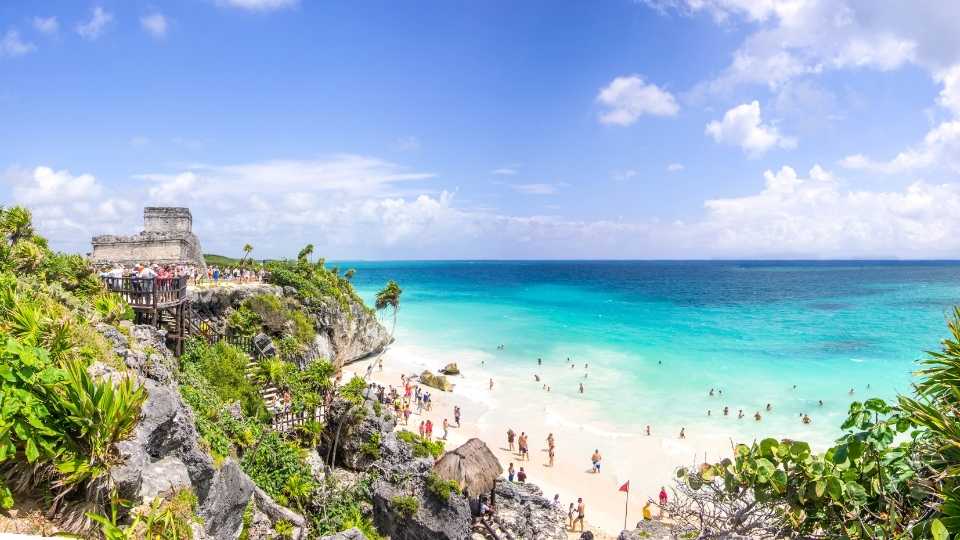

When it comes to planning the perfect romantic getaway, couples often seek destinations that offer a blend of relaxation, adventure, and intimacy. Near Maryland, there are several spots that stand out for their unique charm, breathtaking landscapes, and romantic ambiance. From the serene waters of Chesapeake Bay to the majestic mountains of Shenandoah Valley, let’s explore the best vacation spots for couples looking for that unforgettable retreat.
Chesapeake Bay: A Serene Waterside Escape
Chesapeake Bay is renowned for its tranquil waters, picturesque lighthouses, and abundant seafood, making it an ideal spot for couples. The bay’s vast expanse offers numerous activities such as sailing, kayaking, and fishing, allowing couples to bond over shared adventures. For those seeking relaxation, the bay’s shores are dotted with quaint bed and breakfasts and luxury resorts, providing the perfect backdrop for a romantic sunset.
Shenandoah Valley: Nature’s Romantic Backdrop
The Shenandoah Valley, with its rolling hills, vibrant wildflowers, and panoramic views, is a haven for couples who love nature. The valley’s scenic drives, such as the Skyline Drive, offer breathtaking vistas of the Virginia countryside. Hiking trails lead to hidden waterfalls and overlooks, offering secluded spots for picnics or quiet moments together. The region’s vineyards also offer wine tastings and tours, adding a touch of elegance to your romantic getaway.
Deep Creek Lake: A Year-Round Romantic Destination
Deep Creek Lake, Maryland’s largest freshwater lake, is a year-round destination for couples. In the warmer months, the lake becomes a playground for water sports, hiking, and golfing. The fall brings stunning foliage that transforms the landscape, ideal for scenic drives or cozying up in a lakeside cabin. Winter at Deep Creek Lake is equally magical, with opportunities for skiing, snowboarding, and ice fishing, followed by evenings spent by the fireplace.
Virginia Beach: Sun, Sand, and Romance
For couples who dream of a beach getaway, Virginia Beach offers miles of sandy shores, warm waves, and vibrant boardwalks. Days can be spent sunbathing, surfing, or exploring the city’s cultural attractions, while nights are perfect for romantic walks along the moonlit beach. The area’s fine dining and entertainment options ensure that every moment of your stay is filled with romance and excitement.
Cape May: A Victorian Seaside Gem
Cape May stands out for its Victorian charm, historic architecture, and inviting beaches. This seaside resort town is perfect for couples who appreciate the elegance of bygone eras. Horse-drawn carriage rides, guided tours of Victorian mansions, and sunset sails add a romantic touch to your visit. Cape May’s award-winning wineries and gourmet restaurants offer intimate dining experiences, making every meal a memorable part of your romantic getaway.
Creating Lasting Memories Together
Choosing the best vacation spot for a romantic getaway near Maryland depends on what you and your partner value most—be it adventure, relaxation, or cultural experiences. Each of these destinations offers something unique, from serene waterside retreats and nature-filled adventures to beachside escapes and historic explorations.
Spending quality time together in these beautiful settings allows couples to strengthen their bond, create lasting memories, and experience the joy of discovery. Whether it’s a weekend escape or a longer retreat, these spots near Maryland promise a blend of romance, beauty, and shared experiences that will deepen your connection and leave you both with stories to cherish for years to come.
In planning your getaway, consider what activities you both enjoy, the type of scenery you find most romantic, and the level of adventure you’re seeking. Whether it’s exploring the great outdoors, enjoying fine dining and wine tasting, or simply relaxing by the water, these destinations offer endless possibilities for creating those perfect moments together.
As you embark on your romantic journey, remember that the most important aspect of any vacation is the time spent with your loved one. These vacation spots near Maryland are not just about the places you’ll visit but about the moments you’ll share and the memories you’ll create together. So pack your bags, set your sights on romance, and let the beauty of these destinations bring you closer than ever before.



Hello there! I’m Gabriel Holmes, a 41-year-old travel enthusiast with a degree in Marketing from the Indiana University Northwest. I’m the voice behind TopWorldTravels.com, where I channel my passion for exploration into engaging travel narratives and invaluable tips.
My journey into the world of travel is a personal odyssey, fueled by a desire to uncover the beauty and diversity our planet has to offer. Over the years, I’ve wandered through countless destinations, immersing myself in various cultures and capturing the essence of each experience through my writing. From the bustling streets of metropolitan cities to the serene landscapes off the beaten path, I’ve made it my mission to share the gems I discover along the way.
Armed with my marketing background from IUN, I approach travel with a strategic and analytical mindset. This expertise allows me to curate content on TopWorldTravels.com that resonates with a diverse audience. Whether you’re a budget backpacker or a luxury traveler, my goal is to provide insights that cater to all tastes and preferences.
Beyond the typical tourist spots, I’m committed to uncovering the authentic heart of each destination. My writings not only offer practical advice on packing and navigating unfamiliar terrains but also emphasize the importance of responsible tourism. I believe in leaving a positive impact on the places I visit, promoting sustainable practices that preserve the environment and support local communities.
Join me on my virtual expeditions at TopWorldTravels.com, where my words weave a tapestry of discovery, wanderlust, and cultural appreciation. Travel, for me, is more than a leisure activity; it’s a transformative journey that enriches the soul and broadens horizons. Let TopWorldTravels.com be your compass to a world of unforgettable experiences, as we embark on this vicarious adventure together.
Traveling Solo
Top Affordable Romantic Getaways in Virginia for Couples: Your Ultimate Guide to Retreats


Virginia, often referred to as the “Old Dominion,” is a state brimming with charm, history, and natural beauty, making it an ideal destination for couples seeking both romance and affordability. From the serene beaches of the Eastern Shore to the majestic Blue Ridge Mountains, Virginia offers a diverse array of settings for a memorable getaway. This guide aims to highlight the best affordable romantic getaways in Virginia, ensuring that every couple can find their perfect retreat without breaking the bank.
Discovering Virginia’s Romantic Retreats
Virginia’s rich tapestry of landscapes serves as the perfect backdrop for romance. Whether you’re celebrating an anniversary, planning a surprise weekend away, or simply looking to spend quality time together, Virginia’s romantic getaways cater to a wide range of interests and preferences.
Beach Getaways: Sun, Sand, and Surf
For those who dream of relaxing by the sea, Virginia Beach offers a perfect blend of sun, sand, and surf. Beyond its famous boardwalk and stunning ocean views, couples can discover hidden gems such as the secluded beaches of First Landing State Park or the serene Back Bay National Wildlife Refuge. Accommodations in the area range from cozy beachfront cottages to luxury resorts, all offering special packages to make your stay both affordable and unforgettable.
Mountain Escapes: Serenity and Scenery
If you’re drawn to the tranquility of the mountains, the Shenandoah Valley and the Blue Ridge Mountains provide a breathtaking setting for a romantic escape. Couples can explore the scenic beauty of Shenandoah National Park, with its picturesque hiking trails and panoramic vistas. Quaint mountain cabins and bed-and-breakfasts dot the region, offering a secluded and intimate experience. Many of these retreats feature special amenities such as hot tubs and fireplaces, adding an extra touch of romance to your mountain getaway.
Historic Hideaways: Charm and Character
Virginia’s rich history is reflected in its numerous historic towns and landmarks. Couples with a love for the past can step back in time in Colonial Williamsburg, where the beautifully restored 18th-century buildings and reenactments bring history to life. Alternatively, the charming small towns of Middleburg and Abingdon offer a slower pace of life, with their antique shops, art galleries, and historic inns. These towns provide a romantic setting that combines comfort with a sense of history, all at an affordable price.
Wine Country Weekends: Sipping and Savoring
Virginia’s burgeoning wine country offers an ideal getaway for couples who enjoy sipping and savoring local flavors. The state’s wine regions, including Loudoun County and the Monticello Wine Trail, boast numerous vineyards and wineries where couples can indulge in wine tastings and vineyard tours. Many wineries also offer cozy lodging options, from rustic cottages to elegant bed-and-breakfasts, nestled among the vines. These romantic retreats often include wine-themed packages, making for an affordable and indulgent escape.
Outdoor Adventures: Thrills and Bonding
For adventurous couples, Virginia’s diverse landscapes offer endless opportunities for outdoor activities. Kayaking on the James River, hiking in the Appalachian Mountains, or horseback riding in the countryside are just a few ways to experience Virginia’s natural beauty together. Many outdoor retreats provide affordable accommodation options, such as camping sites, yurts, and eco-friendly lodges, allowing couples to immerse themselves in nature without overspending.
Planning Your Affordable Romantic Getaway in Virginia
When planning your romantic getaway in Virginia, consider visiting during the off-peak season or mid-week to take advantage of lower rates and fewer crowds. Additionally, many accommodations and attractions offer special deals and packages for couples, including romantic extras like champagne, chocolates, and late check-out. By doing a bit of research and planning ahead, you can create a memorable and affordable romantic retreat in Virginia that perfectly suits your preferences and budget.
In conclusion, Virginia’s diverse offerings make it a prime destination for couples seeking romance, adventure, and relaxation. Whether you’re drawn to the beach, the mountains, historic towns, wine country, or outdoor adventures, you’ll find an array of affordable romantic getaways in Virginia that promise to create lasting memories for you and your partner. So pack your bags, set off on a journey of discovery, and experience the magic of Virginia’s romantic retreats.



Hello there! I’m Gabriel Holmes, a 41-year-old travel enthusiast with a degree in Marketing from the Indiana University Northwest. I’m the voice behind TopWorldTravels.com, where I channel my passion for exploration into engaging travel narratives and invaluable tips.
My journey into the world of travel is a personal odyssey, fueled by a desire to uncover the beauty and diversity our planet has to offer. Over the years, I’ve wandered through countless destinations, immersing myself in various cultures and capturing the essence of each experience through my writing. From the bustling streets of metropolitan cities to the serene landscapes off the beaten path, I’ve made it my mission to share the gems I discover along the way.
Armed with my marketing background from IUN, I approach travel with a strategic and analytical mindset. This expertise allows me to curate content on TopWorldTravels.com that resonates with a diverse audience. Whether you’re a budget backpacker or a luxury traveler, my goal is to provide insights that cater to all tastes and preferences.
Beyond the typical tourist spots, I’m committed to uncovering the authentic heart of each destination. My writings not only offer practical advice on packing and navigating unfamiliar terrains but also emphasize the importance of responsible tourism. I believe in leaving a positive impact on the places I visit, promoting sustainable practices that preserve the environment and support local communities.
Join me on my virtual expeditions at TopWorldTravels.com, where my words weave a tapestry of discovery, wanderlust, and cultural appreciation. Travel, for me, is more than a leisure activity; it’s a transformative journey that enriches the soul and broadens horizons. Let TopWorldTravels.com be your compass to a world of unforgettable experiences, as we embark on this vicarious adventure together.
-



 Traveling Solo6 months ago
Traveling Solo6 months agoAdventures Through the Lens: a Solo Traveler’s Photography Guide
-



 ExPat Destinations7 months ago
ExPat Destinations7 months agoFrom Foreigner to Local: Cultural Adaptation Explained for Expats
-



 Traveling Solo5 months ago
Traveling Solo5 months agoThe Exciting Chronicles of Solo Travel Experiences
-



 ExPat Destinations8 months ago
ExPat Destinations8 months agoBuilding Connections: the Importance of Expat Communities
-



 Senior Travel8 months ago
Senior Travel8 months agoVoyage Through Majestic Canadian Waters
-



 Traveling Solo7 months ago
Traveling Solo7 months agoUnpack the Perfect Journey: Mastering Your Packing Essentials
-



 ExPat Destinations6 months ago
ExPat Destinations6 months agoMaking It Official: Understanding Visa and Residency for Expats
-



 Traveling Solo6 months ago
Traveling Solo6 months agoClimate Compliant: Packing for Different Climates






